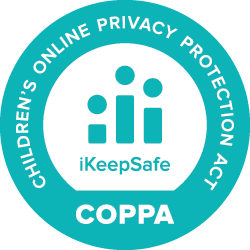ReMA Recycling Collection | Grades K-12
Grades 5-8
Watch this video to learn about how the recycled materials industry provides critical raw material necessary for the everyday items and essential infrastructure we all depend on.
Activities
Activity
People talk about throwing things "away." Did you know there is no "away?" In this activity, you'll classify what your school discards and then find new place for the stuff you no longer want or need.
Activity
Today's fossil fuels and most plastic products originated with ancient sunlight. In this activity, you explore the properties of petroleum and its history.
Activity
Where does a soda can come from and how does it get from ground to table? You'll explore the engineering and design behind this common item and consider its value.
Activity
In this activity, you’ll investigate the answer to a big question - and save energy as you do.
Activity
It can be confusing to know which items you can recycle. In this activity, you will investigate different types of plastic and some of their properties. Then you will design a new way to sort the plastics from waste so that more plastic gets recycled and can be used to make new products.
Activity
Through science and engineering, we can keep valuable resources in circulation.
Activity
The properties of a material may determine its use. In this activity, you will explore the properties of metals and alloys. You will also explore how properties of matter are useful in recycling different materials.
Activity
Many of the things we use every day are made of many kinds of parts. To recycle them, we must first take them apart and figure out what's inside.
Activity
In this activity, you'll use mathematics and geography skills to investigate the power of recycling.
Readings
Supporting Material
It's not quite as quick as flipping a top, but aluminum is one of the easiest materials to recycle.
Supporting Material
Do you have a magnetic personality? Your car does, too. More than 2/3 of the mass of most cars is made of iron and steel - metals that are magnetic.
Supporting Material
If you are reading this in school, chances are you are looking at either a screen or a sheet of paper. Did you know that before many classrooms used digital tools, the average student used more than 300 pounds of paper a year?
Supporting Material
Every machine has moving parts that move against one another. This friction creates heat, wastes energy, and can cause damage. Lubricants reduce the friction when a machine runs, lowering the temperature and helping protect the parts.
Supporting Material
Look in your refrigerator and pantry. How many products come in glass bottles or jars? Because foods don't dissolve glass, it's a great storage material. It also lasts for a long time.
Supporting Material
Here's a quick trivia question: What part of your car might eventually become jewelry? Read on to learn the answer.
Supporting Material
Picture the attributes of a rubber band or a rubber ball. Did you think stretchy or bouncy? Did you know that the natural version of rubber is called latex? Latex is used in tires that grip the road, and it's what gives elastic that snap.
ChampionsofRecycling
Video
Meet Brandi Harleaux and learn about the work she does and her career pathway.
Video
Meet Jennifer Betts and learn about the work she does and her career pathway.
Video
Meet Barry Wolff and learn about the work he does and his career pathway.
Video
Meet Nidhi Turakia and learn about the work she does and her career pathway.
Games
Game
The recycling process is depicted on the ScrapMap™ as a large circle. Each of the circles on this page shows how we can take something old and create a new and useful product. In the United States in 2011, more than 134 million metric tons of scrap metal, paper, plastic, glass, textiles, rubber, and electronics – valued at $100 billion – were manufactured into new products.
Game
In Scrap Titans, you are an entrepreneur competing to form the most profitable recycled materials business.


















